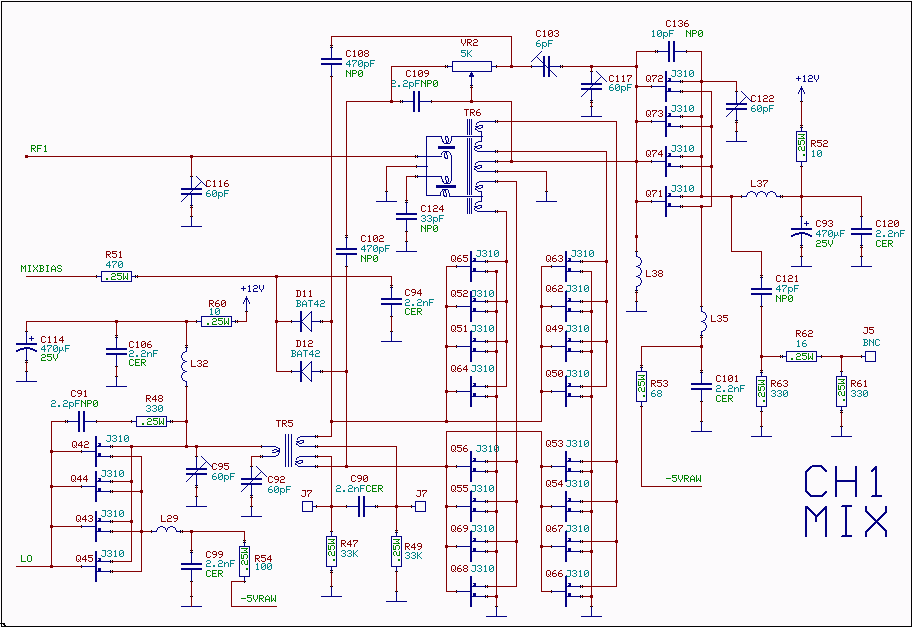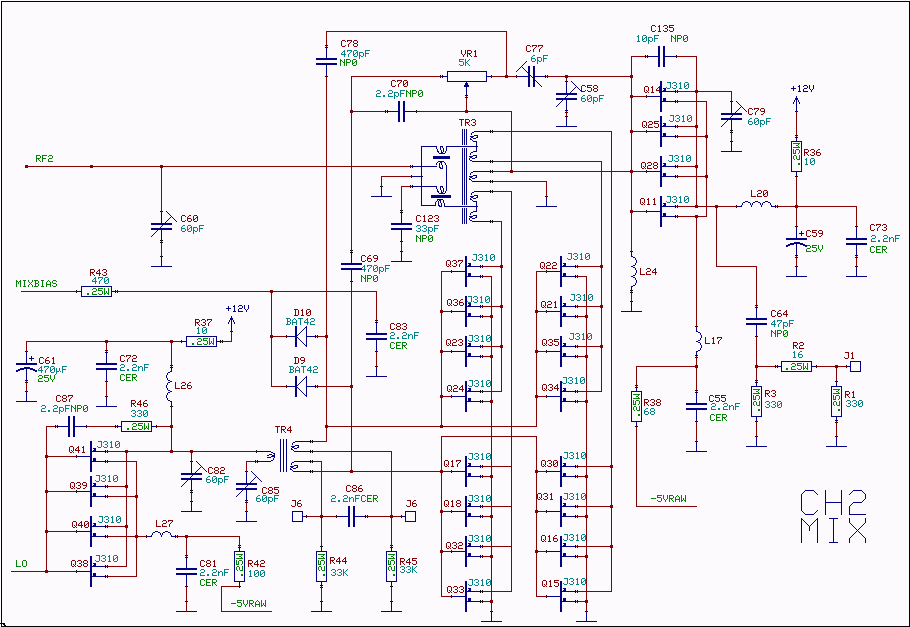|
Four groups of four J310 each operate as four switches that
connect one or the other side of two transformers to ground.
Each transformer has the 144 MHz RF signal with the same phase
at all terminals, it is fed into the transformer through the midpoint.
The IF signal that is produced will see ground at the transformer
midpoint and will therefore develop a magnetic flux in the core.
The IF signal is picked up by a separate winding on each transformer,
these windings are connected in parallel to produce twice the
IF power while some intermodulation products are suppressed.
By replacing the J310 FETs with GaAs FETs it would be possible to improve the mixer IP3 from about 35dBm to about 40dBm according to i.e. U.Rohde QEX Jan/Feb 2003 p 27. I have made a few experiments with MGF1302 GaAs FETs but they were not encouraging. Even with the J310 it is possible to get IP3 values up to and well above +40dBm, but tuning becomes critical since the high IP3 value then is obtained by cancellation of two equal intermodulation signals. Such cancellation effects are not particularly useful since a deep null for one particular higher order product does not coincide with the nulls for any of the other higher order intermodulation or spurious response signals because of the non-linear variation of the large capacitances within the FETs. Figure 1 shows the mixer, IF filter and IF amplifier. The IF filter protects the IF amplifier from large levels of the 74 MHz LO signal and helps to suppress the false responses of the RX70 unit. The IF amplifier uses four J310 transistors in parallel with noiseless feedback. It has 50 ohms output and input impedance with a gain of about 6dB and a noise figure of about 2dB. To protect the IF filter and the mixer from impedance variations at the output connector, an attenuator is added at the output. The output IP3 of the IF amplifier is +39dBm leaving an output IP3 of +35 dBm at the output connector after the attenuator. This is 6dB above the input IP3 of the RX70 unit which means that the third order intermodulation produced in the IF amplifier will be 12dB below the third order intermodulation produced in the RX70 unit. The dominating source of third order intermodulation in the RX144 unit is (of course) the mixer so the output IP3 of the entire unit is +29dBm.
|

